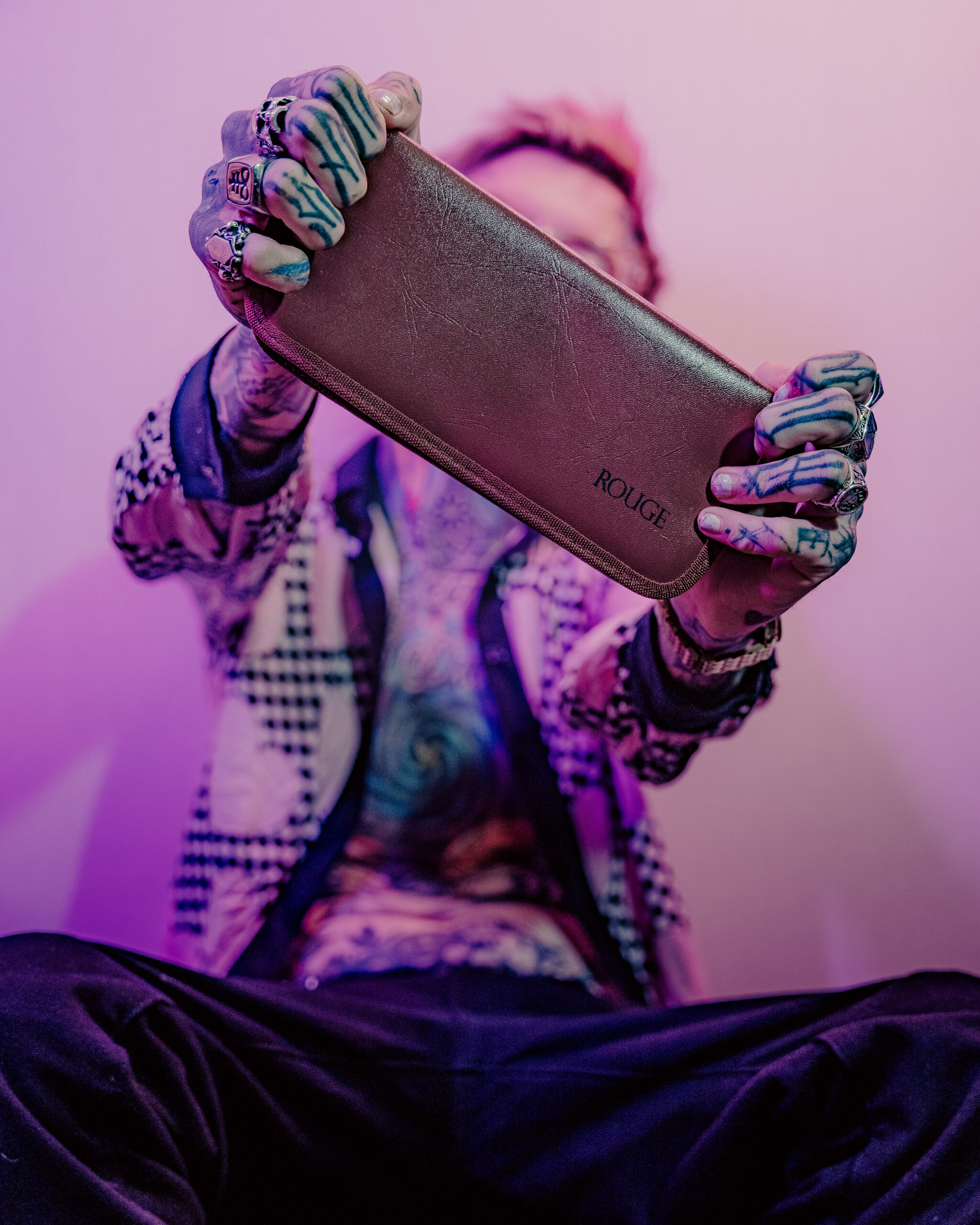Defining Sexual Orientation
Defining sexual orientation can be complex, as it encompasses a spectrum of attractions and identities. Two terms often encountered are pansexuality and bisexuality, which are frequently misunderstood or conflated. This article aims to explore the nuances of these identities, highlighting their distinct characteristics and shedding light on the complexities surrounding them.
Pansexuality
Pansexuality is characterized by romantic, sexual, or emotional attraction to people regardless of their gender identity or expression. Pansexual individuals may be attracted to men, women, transgender individuals, non-binary people, and anyone else, seeing gender as a less significant factor in attraction. It’s important to note that pansexuality encompasses more than just physical attraction; it extends to emotional and intellectual connections as well.
Bisexuality, on the other hand, typically refers to romantic, sexual, or emotional attraction to two genders. This could involve attraction to men and women, or any combination of two genders. Bisexual individuals may experience varying degrees of attraction to each gender, with some experiencing more intense feelings for one gender over another.
While both pansexuality and bisexuality involve attraction to multiple genders, they differ in their conceptualization of gender. Pansexuals often view gender as a less significant factor in attraction, embracing fluidity and diversity in gender expression. Bisexual individuals may focus on attraction to two specific genders, although the experience can be complex and individualized.

Bisexuality

Defining sexual orientation can be complex, as it encompasses a spectrum of attractions and identities. Two terms often encountered are pansexuality and bisexuality, which are frequently misunderstood or conflated. This article aims to explore the nuances of these identities, highlighting their distinct characteristics and shedding light on the complexities surrounding them.
Pansexuality is characterized by romantic, sexual, or emotional attraction to people regardless of their gender identity or expression. Pansexual individuals may be attracted to men, women, transgender individuals, non-binary people, and anyone else, seeing gender as a less significant factor in attraction. It’s important to note that pansexuality encompasses more than just physical attraction; it extends to emotional and intellectual connections as well.
Bisexuality, on the other hand, typically refers to romantic, sexual, or emotional attraction to two genders. This could involve attraction to men and women, or any combination of two genders. Bisexual individuals may experience varying degrees of attraction to each gender, with some experiencing more intense feelings for one gender over another.
While both pansexuality and bisexuality involve attraction to multiple genders, they differ in their conceptualization of gender. Pansexuals often view gender as a less significant factor in attraction, embracing fluidity and diversity in gender expression. Bisexual individuals may focus on attraction to two specific genders, although the experience can be complex and individualized.
Historical and Cultural Context
Understanding sexual orientation requires navigating a spectrum of identities and attractions. Pansexuality and bisexuality are two terms often used, but their meanings are sometimes misconstrued or conflated. This exploration aims to clarify these identities, emphasizing their distinct characteristics and the complexities surrounding them within the broader context of human experience.
Evolution of Terms
The evolution of language surrounding sexual orientation is a reflection of changing social attitudes and understandings. Terms like “pansexual” and “bisexual” have gained prominence in recent decades as society has become more inclusive and accepting of diverse sexual identities.
Historically, conversations about sexuality were often limited to a binary understanding of male and female attraction. The term “homosexuality” emerged in the late 19th century, primarily referring to attraction between people of the same sex. However, this framework did not adequately encompass the experiences of individuals who felt drawn to more than two genders.

As societal perspectives shifted, terms like “bisexual” gained traction in the mid-20th century, aiming to represent attraction to two genders. Initially, this often implied attraction to men and women exclusively. However, as understandings of gender expanded, “bisexuality” began to encompass a broader spectrum of attractions, including those to non-binary individuals.
The term “pansexual” emerged later, gaining wider recognition in the 21st century. It signifies attraction to people regardless of their gender identity or expression. This emphasizes that gender is not a primary factor in determining attraction for pansexual individuals.
It’s important to recognize that these terms are fluid and evolving. Individuals may identify with one term, another, or choose not to label their sexuality at all. The most crucial aspect is respecting how individuals define themselves and using language that aligns with their preferences.
Social Perceptions and Stigma
Historical and cultural contexts profoundly influence social perceptions and stigma surrounding sexual identities. Throughout history, societal norms often enforced rigid binary understandings of gender and sexuality, leading to the stigmatization of those who deviated from these norms.
In many cultures, same-sex relationships have been criminalized or ostracized, resulting in prejudice and discrimination against individuals with non-heterosexual identities. These historical injustices continue to shape societal attitudes today, contributing to ongoing stigma and challenges faced by LGBTQ+ communities.
The evolution of language and social acceptance has gradually led to more inclusive understandings of sexuality. However, stigma persists in various forms, including prejudice, discrimination, and negative stereotypes. This stigma can impact individuals’ mental health, well-being, and access to resources and opportunities.
It’s crucial to address societal stigma by promoting education, fostering empathy, and advocating for policies that protect the rights and dignity of all individuals, regardless of their sexual orientation or gender identity.
Experiences and Challenges
Understanding pansexuality and bisexuality requires navigating a spectrum of identities and attractions. While both terms relate to attraction to multiple genders, they hold distinct meanings and conceptualizations. This exploration aims to clarify these complexities, shedding light on the unique experiences and challenges faced by individuals who identify as pansexual or bisexual.
Internalized Homophobia and Biphobia
Experiences and challenges within the LGBTQ+ community are deeply intertwined with internalized homophobia and biphobia. These internalized prejudices arise from societal stigma and negative messages that individuals absorb throughout their lives, leading to self-criticism, shame, and feelings of inadequacy.
Internalized homophobia can manifest in various ways, including fear of coming out, reluctance to express oneself authentically, and engaging in behaviors that conform to societal expectations of masculinity or femininity. For bisexual individuals, biphobia often involves questioning one’s own identity, feeling pressure to choose between men and women, or facing rejection from both heterosexual and homosexual communities.
These internalized prejudices can have profound impacts on mental health, leading to anxiety, depression, and low self-esteem. They can also contribute to relationship difficulties, as individuals may struggle with trust, intimacy, and self-acceptance. Overcoming internalized homophobia and biphobia is a process that often involves therapy, support groups, and connecting with affirming communities.
Navigating Relationships
Navigating relationships as a pansexual or bisexual individual can present unique challenges stemming from societal biases and internalized prejudices. One common hurdle is encountering lack of understanding or acceptance from friends, family, or romantic partners who may hold outdated views on sexuality. This can lead to feelings of isolation, rejection, and difficulty finding supportive relationships.
Furthermore, bisexual individuals often face pressure to choose a primary gender identity or experience “compulsory bisexuality,” where society expects them to date exclusively with one gender at a time. This can be incredibly burdensome and invalidate their authentic experiences.
Pansexual individuals may encounter the misconception that they are simply “gay” or “lesbian” due to attraction to certain genders, leading to erasure of their unique identity. Additionally, pansexuality’s fluidity and embrace of gender diversity can be challenging for those who prefer more rigid definitions of gender roles and relationships.
Overcoming these challenges often involves open communication, education, and finding communities that celebrate diversity and inclusivity. Building strong support systems with understanding friends, family, or romantic partners is crucial for fostering a sense of belonging and acceptance.
Coming Out Experiences
Defining sexual orientation can be complex, as it encompasses a spectrum of attractions and identities. Two terms often encountered are pansexuality and bisexuality, which are frequently misunderstood or conflated. This article aims to explore the nuances of these identities, highlighting their distinct characteristics and shedding light on the complexities surrounding them.
Pansexuality is characterized by romantic, sexual, or emotional attraction to people regardless of their gender identity or expression. Pansexual individuals may be attracted to men, women, transgender individuals, non-binary people, and anyone else, seeing gender as a less significant factor in attraction. It’s important to note that pansexuality encompasses more than just physical attraction; it extends to emotional and intellectual connections as well.
Bisexuality, on the other hand, typically refers to romantic, sexual, or emotional attraction to two genders. This could involve attraction to men and women, or any combination of two genders. Bisexual individuals may experience varying degrees of attraction to each gender, with some experiencing more intense feelings for one gender over another.
While both pansexuality and bisexuality involve attraction to multiple genders, they differ in their conceptualization of gender. Pansexuals often view gender as a less significant factor in attraction, embracing fluidity and diversity in gender expression. Bisexual individuals may focus on attraction to two specific genders, although the experience can be complex and individualized.
Understanding sexual orientation requires navigating a spectrum of identities and attractions. Pansexuality and bisexuality are two terms often used, but their meanings are sometimes misconstrued or conflated. This exploration aims to clarify these identities, emphasizing their distinct characteristics and the complexities surrounding them within the broader context of human experience.
The evolution of language surrounding sexual orientation is a reflection of changing social attitudes and understandings. Terms like “pansexual” and “bisexual” have gained prominence in recent decades as society has become more inclusive and accepting of diverse sexual identities.
Historically, conversations about sexuality were often limited to a binary understanding of male and female attraction. The term “homosexuality” emerged in the late 19th century, primarily referring to attraction between people of the same sex. However, this framework did not adequately encompass the experiences of individuals who felt drawn to more than two genders.
As societal perspectives shifted, terms like “bisexual” gained traction in the mid-20th century, aiming to represent attraction to two genders. Initially, this often implied attraction to men and women exclusively. However, as understandings of gender expanded, “bisexuality” began to encompass a broader spectrum of attractions, including those to non-binary individuals.
The term “pansexual” emerged later, gaining wider recognition in the 21st century. It signifies attraction to people regardless of their gender identity or expression. This emphasizes that gender is not a primary factor in determining attraction for pansexual individuals.
It’s important to recognize that these terms are fluid and evolving. Individuals may identify with one term, another, or choose not to label their sexuality at all. The most crucial aspect is respecting how individuals define themselves and using language that aligns with their preferences.
Historical and cultural contexts profoundly influence social perceptions and stigma surrounding sexual identities. Throughout history, societal norms often enforced rigid binary understandings of gender and sexuality, leading to the stigmatization of those who deviated from these norms.
In many cultures, same-sex relationships have been criminalized or ostracized, resulting in prejudice and discrimination against individuals with non-heterosexual identities. These historical injustices continue to shape societal attitudes today, contributing to ongoing stigma and challenges faced by LGBTQ+ communities.
The evolution of language and social acceptance has gradually led to more inclusive understandings of sexuality. However, stigma persists in various forms, including prejudice, discrimination, and negative stereotypes. This stigma can impact individuals’ mental health, well-being, and access to resources and opportunities.
It’s crucial to address societal stigma by promoting education, fostering empathy, and advocating for policies that protect the rights and dignity of all individuals, regardless of their sexual orientation or gender identity.
Experiences and challenges within the LGBTQ+ community are deeply intertwined with internalized homophobia and biphobia. These internalized prejudices arise from societal stigma and negative messages that individuals absorb throughout their lives, leading to self-criticism, shame, and feelings of inadequacy.
Internalized homophobia can manifest in various ways, including fear of coming out, reluctance to express oneself authentically, and engaging in behaviors that conform to societal expectations of masculinity or femininity. For bisexual individuals, biphobia often involves questioning one’s own identity, feeling pressure to choose between men and women, or facing rejection from both heterosexual and homosexual communities.
Navigating relationships as a pansexual or bisexual individual can present unique challenges stemming from societal biases and internalized prejudices. One common hurdle is encountering lack of understanding or acceptance from friends, family, or romantic partners who may hold outdated views on sexuality. This can lead to feelings of isolation, rejection, and difficulty finding supportive relationships.
Furthermore, bisexual individuals often face pressure to choose a primary gender identity or experience “compulsory bisexuality,” where society expects them to date exclusively with one gender at a time. This can be incredibly burdensome and invalidate their authentic experiences.
Pansexual individuals may encounter the misconception that they are simply “gay” or “lesbian” due to attraction to certain genders, leading to erasure of their unique identity. Additionally, pansexuality’s fluidity and embrace of gender diversity can be challenging for those who prefer more rigid definitions of gender roles and relationships.
Overcoming these challenges often involves open communication, education, and finding communities that celebrate diversity and inclusivity. Building strong support systems with understanding friends, family, or romantic partners is crucial for fostering a sense of belonging and acceptance.
Overlap and Differences
Shared Aspects
Distinct Perspectives
Intersectionality and Individuality
Intersectionality acknowledges that individuals hold multiple identities simultaneously, including race, gender, sexuality, class, and religion. These identities intersect and influence each other, creating unique experiences and challenges. Understanding intersectionality is crucial when exploring pansexuality and bisexuality because it recognizes that these identities are not experienced in a vacuum but within the context of other social categories. For instance, a Black bisexual individual may face different societal pressures and forms of discrimination compared to a white bisexual person. Similarly, a transgender pansexual individual may encounter unique challenges related to both gender identity and sexual orientation.
Gender Identity and Sexual Orientation
Intersectionality plays a vital role in understanding the complexities of pansexuality and bisexuality because it recognizes that individuals navigate these identities within the context of other social categories such as race, class, religion, and disability.
A bisexual person of color may face compounded discrimination based on both their sexual orientation and their race. Transgender individuals who identify as pansexual may encounter additional challenges related to gender identity and societal expectations. Intersectionality highlights that experiences are not monolithic and understanding these overlapping identities is crucial for fostering inclusivity and addressing systemic inequalities.
For example, a Black bisexual woman might experience unique forms of prejudice stemming from the intersection of her race, sexuality, and gender. Similarly, a Muslim pansexual man may face challenges navigating cultural norms and expectations surrounding both his faith and sexual orientation. Recognizing these intersecting identities allows for more nuanced and empathetic understandings of individual experiences.
Embracing intersectionality means acknowledging that people’s lived realities are shaped by the complex interplay of their various identities. It requires moving beyond simplistic assumptions and recognizing the richness and diversity within LGBTQ+ communities. By understanding how these identities intersect, we can work towards creating more inclusive and equitable spaces for all.
Cultural Influences on Identity
Intersectionality is a crucial framework for understanding the complexities of pansexuality and bisexuality because it recognizes that individuals experience these identities within the context of other social categories like race, class, religion, and gender identity. These intersecting identities shape individual experiences, leading to diverse and unique challenges.
For instance, a Black bisexual person might face compounded discrimination based on both their race and sexual orientation. Similarly, a transgender pansexual individual might encounter unique challenges related to both gender identity and sexual attraction.
Acknowledging intersectionality allows us to move beyond generalizations and recognize the richness and diversity within LGBTQ+ communities. It emphasizes the need for inclusive spaces that account for the multifaceted experiences of individuals.
painful sex toys
Bey Bey Name
Doll Chronicles
- Why Does Lip Filler Not Last On Me - November 10, 2025
- Obagi Nu-Derm System For Dark Spots And Pigmentation In Kingston Upon Thames Surrey London - November 10, 2025
- What Is The Best Treatment For 70 Year Old Skin On Face? - November 9, 2025


